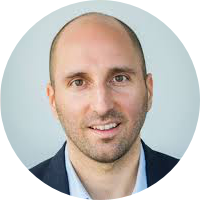Robert M. G. Reinhart, PhD

Research in my laboratory seeks to understand (i) the nature of visual perception and cognition (e.g., attention, working memory, executive control, learning) in the healthy adult brain, (ii) how these processes breakdown in aging and neuropsychiatric illnesses, such as schizophrenia, and (iii) how we can leverage insights from basic and clinical science to develop novel interventions for optimizing performance in healthy people and restoring abilities in aging and patient populations. In our laboratory, we examine cognitive mechanisms from a physiologically inspired perspective centered on large-scale brain networks and how they interact through synchronized electrophysiological rhythms. We focus on the phase, frequency, and power of local electroencephalographic (EEG) rhythms, as well as a variety of neural coding schemes, such as cross-frequency coupling and phase synchronization, hypothesized to index flexible cortical circuits that integrate information across multiple temporal and spatial scales during cognition. We combine measures of EEG rhythms and their synchronization with source reconstruction methods (e.g., beamforming) to improve reasoning about the spatial location of these neural signals and networks. Although the correlational cognitive neuroscience methods that we use in our research provide fast progress and rapid hypothesis testing, we believe that obtaining causal control over neural activity is one of the best ways to understand how information is processed in the human brain. To this end, our research utilizes neuromodulation techniques, such as transcranial direct-current stimulation (tDCS) and transcranial alternating-current stimulation (tACS). Our expertise with noninvasive neuromodulation allows us to establish causal relationships between brain activity and behavior, and build customized stimulation protocols for boosting mental functions and performance in healthy and patient populations. Finally, we believe a strong scientific approach involves the use of converging evidence from multiple methods, levels of analysis, and subject groups. Thus, in addition to expertise with behavioral, electrophysiological, and noninvasive neuromodulation techniques, we are also employing computational modeling and neuroimaging methods, and expanding our patient populations to include disorders of anxiety, depression, and pain.